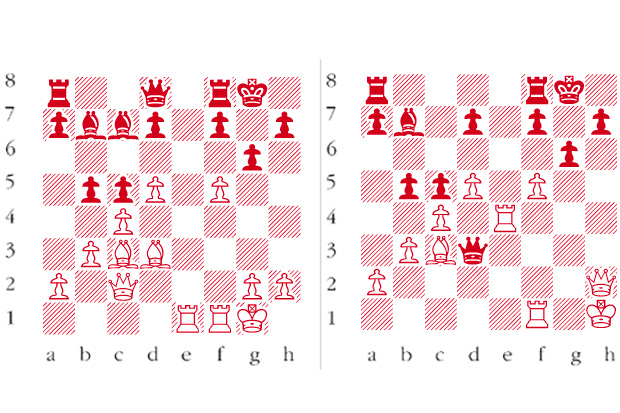Nowadays it is standard, when publishing a chess game, to give the names of both players. This was not always the case. In the 19th century it was quite common to reveal the winner’s name while leaving the loser identified solely as ‘anon’ for anonymous. Occasionally this was for the perfectly good reason that the loser’s identity had been mislaid in the age before modern communications, though there could also have been the fear in certain cases that the defeated player, insulted at seeing his name in print attached to some chessboard calamity, might challenge the publisher to a duel.
In contemporary chess the soubriquet ‘anon’ tends to be reserved for victims of simultaneous displays — where a master or grandmaster takes on, in samurai style, multiple opponents at the same time — or for games played on the internet where protagonists frequently adopt noms de guerre to disguise their true identity.
This week Anon suffers a couple of reverses — the first extract is from a simultaneous display which I gave at Oxford in 1973 against 107 opponents, where I won 101 games, drew 5 and lost 1 in a total of three hours.
Keene-Anon: Oxford 1973
(see diagram 1)
Black to move played 1 … Qh4 with a serious threat against h2 and thus white’s king. 2 g3 Bxg3 If now 3 hxg3 Qxg3+ and unless White wishes to abandon his bishop on d3 by interposing his queen against the Black checks, then Black will salvage a draw by perpetual check. Hence 3 Re4 Qg5 and only now 4 hxg3 Qxg3+ 5 Kh1 It is vital for what comes for the white queen to interpose on h2. 5 … Qh3+ And only now 6 Qh2 Qxd3 Otherwise black is a piece down. Now the denouement was (see diagram 2) 7 Qxh7+ Kxh7 8 Rh4+ Kg8 9 Rh8 mate
In the world cup in Tromsø, Norway, a mighty field at the start included Aronian, Kramnik, Caruana and our own Mickey Adams. Only Kramnik and Dmitry Andreikin survived elimination to reach the knock-out final. As I write, the shoot-out between the former world champion and the young rising star, a former junior world champion, is unresolved, so watch this space.
The puzzle this week is a win by Daniel Johnson, editor of Standpoint Magazine, also against ‘anon’, in a game played online.





Comments